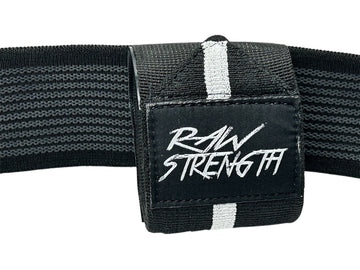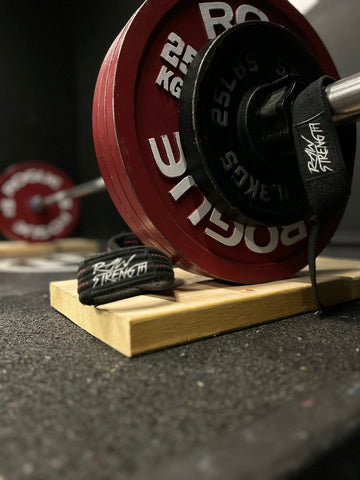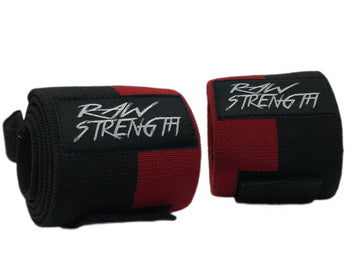How to Get Started as a Female Powerlifter: Tips for Beginners
by Jason Newland on Oct 10, 2024

Female powerlifting is the right sport for you if you’ve ever been curious about lifting heavy and developing serious strength. The squat, bench press, and deadlift are the three core lifts that make up the basis for any powerlifter’s training regimen, and because they are movements that draw from your largest and most tremendously powerful muscles, they greatly empower you.
This guide will help you get started as a female powerlifter, covering key tips, how to do your powerlifting workout routine for women's powerlifting, and how to develop the female powerlifter physique you are looking for.
What is Powerlifting?
Powerlifting is a strength sport where the main objective is to lift the heaviest weight possible in three specific lifts: All will consist of the squat, bench press, and deadlift. Athletes have to fall into different weight classes in a competition where you have to collectively lift the most amount of weight across these three lifts. More and more women are taking to this sport, as they recognize the physical advantages to sport, as well as the psychological and social.
How to Get Started with Female Powerlifting

1. Understand the Basics of Powerlifting
The first comes with understanding what the sport is and what exactly it takes to become a female powerlifter. As mentioned earlier, the sport focuses on three major lifts: bench press, squats, and deadlifts. These lifts of course have their shape and their way and you’ll have to learn each of them. First of all, work on good technique, before you try to lift heavy weights. Many beginners lift too much too soon, thus putting themselves at risk for injury. Mastering these movements will take time and use your time well.
2. Begin with a Basic Powerlifting Program
Following a beginner powerlifting program is important for beginners. A good example would be programs that encourage strength growth through a progressive increase of weight and a low number of reps (3-5 repetitions for a set). If you’re female and you’re attempting to compete on the powerlifting stage in the future, your priority should be to grow into complete form, more than any other aspect of your training, and gradually and progressively add weight to each lift as you increase strength. A powerlifting workout routine will typically include a mix of heavy lifting days and powerlifting accessory lifts, which help strengthen specific muscles involved in the main lifts.
3. Develop a Consistent Training Routine
Powerlifting – consistency is key. The three major lifts that are required to be training program make the sport quite specific and therefore, you will have to follow a structured training program. A powerlifting workout routine typically looks like squats, bench pressing, and deads 2–3 times per week with days for powerlifting accessory lifts like lunges, rows, and triceps extensions to build overall strength and stability.
Read More About: Which Generation Goes to the Gym the Most?
Powerlifting Exercises for Beginners
Here are the essential powerlifting exercises that every female powerlifter needs to include in their routine:
- Squat: This is an important powerlifting exercise. It works out your legs, glutes, and core.
- Bench Press: It is a chest, shoulder, and tricep-building exercise. Train in form, not strength.
- Deadlift: It's a full-body exercise that focuses mainly on your lower back, glutes, and hamstrings.
Each of these exercises can be modified or assisted with lighter weights when you're first starting.
Tips to Start Powerlifting

1. Focus on Technique
Every lift starts with proper form. Lifting with poor form in powerlifting is not only going to limit how much weight you can lift, but it can also increase your risk of injury. Before trying to go heavy make sure you are practicing with lighter weights to perfect your form first.
2. Track Your Progress
Keep a log of your progress. After each training session, write down your numbers, and make small progress. If powerlifting progress feels slow, it’s because powerlifting is all about building strength over time, so don’t get discouraged.
3. Start with a Weight Class in Mind
Women are segregated by weight group in powerlifting women competitions. When you train, you want to know which class you want to compete in so that you can adjust your training program and your diet.
4. Incorporate Rest Days
Powerlifting is quite a restful sport. If you are going to be lifting heavy weights your body will need time to recover between sessions. In essence, your beginner powerlifting program needs to have fitness and rest days, so you don’t burnout and don’t get injured.
5. Don’t Compare Yourself to Others
Every female powerlifter is going on a different journey. You can easily compare yourself with someone who has been training for years, but it’s better to listen to your progress while you go on with what you are doing at this moment.
Common Myths About Female Powerlifting
Myth 1: Female powerlifting will make you bulky: One of the biggest misconceptions about female powerlifting is that it will make women ‘bulky’. This is simply not true. Powerlifting can help build lean muscle mass, which will make you look more lean, and athletic. Female powerlifters have a lean muscular physique that speaks of their strength and work.
Myth 2: Yet another question I get asked all the time is, 'Why are powerlifters fat?' While there are powerlifters who have extra body fat, especially at a higher weight class, this is not the norm. But generally, though, many of the average female deadlifts maintain a lean physique, especially in lighter weight classes where body fat needs to be pared down to be competitive.
Myth 3: Is Powerlifting Bad for Women? Powerlifting is bad for women only if you don’t execute proper form and train smart. But to prevent injury it’s important to work within a well-structured program that includes lots of warm-ups, cool-downs, and a bit of stretching.
It’s exciting to start as a female powerlifter. If you are dedicated to strength, and the right powerlifting workout routine, then over time you can develop what you`ve always wanted: strength and confidence. With powerlifting, it’s a rewarding and empowering path whether you’re attempting to compete or simply get stronger.
Ready to start your powerlifting journey? Visit Raw Strength Apparel to find the gear and apparel you need to perform at your best!
FAQs
1. How do I start powerlifting?
If you want to start powerlifting, learn the basics first before starting a structured beginner powerlifting program. Go back to the three primary lifts (squat, bench press, deadlift), and focus on building the strength bit by bit over time.
2. How to get into powerlifting?
If you can’t find a local gym with a powerlifting community hire a coach to help steer you in the right direction. It will also motivate you and teach you what proper form looks like by having a mentor or joining a group.
3. Is powerlifting good for girls?
Absolutely! Building strength, confidence, and overall fitness, powerlifting is a great exercise. Besides the fact that it helps them develop a strong and toned physique, it is an incredibly empowering activity.
4. How much do you have to lift to be a female powerlifter?
According to Barnhart, there is no fixed amount of weight you have to be lifting to become a powerlifter. Your starting point for every female powerlifter though, is at a different level but as you work out, you’ll pick up increasingly more weight you are in a position to raise. Some women compete in their first meet with only lifting 100 pounds in a lift and as much as there is women who are lifting over 400 pounds.
5. What is the weight class for a female powerlifter?
Female powerlifting competitions separate powerlifters into weight classes. Weight classes can be slightly different from federation to federation, however, common weight classes are under 57 kg, under 63 kg, under 72 kg, and over 84 kg.
Also Read: The Benefits of Using a Sport Barbell: Why It’s a Must-Have for Any Gym




